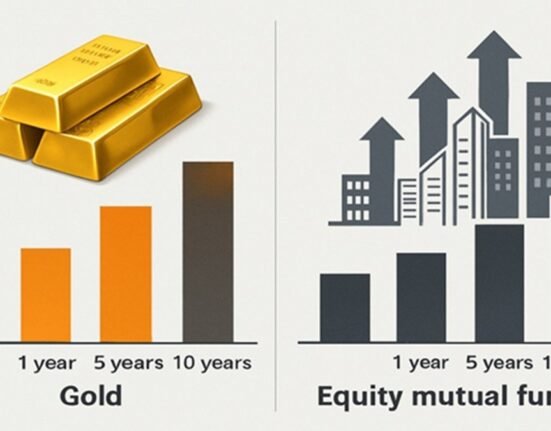IN AN era of economic unpredictability, investors are increasingly looking for assets that offer security and stability. Gold, with its long-standing reputation as a safe-haven investment, remains a top choice for those seeking refuge from market turbulence. But what makes gold such a reliable asset in times of uncertainty, and can it truly safeguard portfolios against the uncertainty of the financial world?
Unlike fiat currencies, gold is insulated from central banks’ monetary policies and political shifts. Historically regarded as a store of value, gold serves as a valuable hedge against inflation, currency devaluation, and market volatility. Its intrinsic value, coupled with its finite supply, further solidifies its status as a safe-haven asset. These factors become even more significant in times of heightened economic uncertainty, such as those witnessed in recent years.
Over the past couple of years, global conflicts and trade disputes have intensified economic uncertainties, prompting investors to flock to gold. Historically, gold prices tend to rise during crises, as seen during the 2008 financial crisis, when gold prices rose sharply as stock markets tumbled.
Fast-forward to early 2025, and gold prices have surged to record highs, eclipsing the US$3,000 per ounce mark for the first time in history. So, what is fuelling this surge? A combination of factors such as inflation fears amid US President Donald Trump’s focus on trade tariffs, weak investor confidence in riskier assets due to trade tensions, central bank purchases, geopolitical risks, and ongoing market volatility.
Major central banks, particularly in Asia, continue to bolster their foreign exchange reserves with gold, diversifying away from the US dollar. According to the World Gold Council, central banks purchased over 1,000 tonnes of gold for the third consecutive year in 2024, reaching an astonishing 1,044.6 tonnes. This trend has continued in 2025, with China’s central bank expanding its gold reserves for the third consecutive month, by adding five tonnes of gold in January, despite the record-high prices.
Recent years have seen significant geopolitical tension, particularly involving oil-rich nations like Russia and Iran. These conflicts have raised fears of a global crisis, sending investors scrambling for safe assets like gold. The ongoing Russia-Ukraine conflict, combined with the unresolved issues in the Middle East, keeps global markets on edge.
BT in your inbox

Start and end each day with the latest news stories and analyses delivered straight to your inbox.
Despite its strong performance, some analysts are questioning whether the precious metal may be entering overbought territory. As at Mar 20, gold closed at record levels 16 times in the first quarter, following an exceptional 2024, which saw a total of 46 record highs. With prices surging more than 15 per cent in just the first three months of 2025, speculation is mounting about a possible technical pullback.
While gold remains a favourite among investors, a technical pullback could be on the horizon as gold futures may experience profit-taking after the recent rapid gains. Should that happen, the immediate support level will be found between US$2,995 and US$3,000 per ounce. Below that, a major support zone lies between US$2,930 and US$2,970, coinciding with the 20-day moving average of US$2,965.39 per ounce. If gold prices fall below this range, it could signal a potential trend reversal. However, any pullback in gold prices may be deemed as an opportunity for investors to buy the dip – particularly given lingering inflationary concerns and expectations of further interest rate cuts by the Federal Reserve.
While short-term volatility is inevitable, gold’s long-term outlook remains positive for those seeking to shield their portfolios from global economic turbulence. As geopolitical risks, inflationary pressures, and market uncertainty persist, gold’s allure as a safe-haven asset is unlikely to fade anytime soon.
The writer is senior market analyst at Phillip Nova







